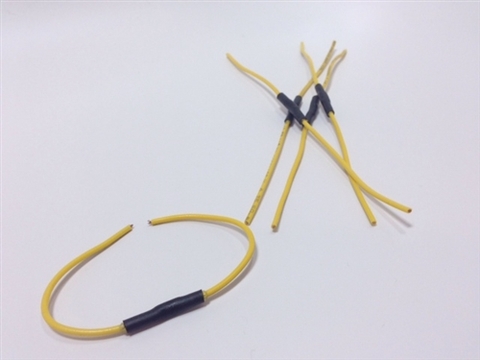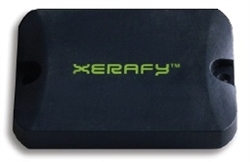Evaluating High-Temperature RFID Tags
Introduction
The use of RFID technology as a modern data capture solution has grown steadily year over year with global RFID market projections nearing $32 Billion by 2023. The growth of RFID can be largely attributed to its versatility as a solution, potential ROI for feasible applications, and relative ease-of-use after installation.
Once predominantly used to open doors and track animals, RFID is more feasible from a cost and capability standpoint than ever. Not to mention, the value of actionable data is at an all-time high. Supply chain, healthcare, manufacturing, and marijuana are just some of the many industries that leverage RFID technology to run more efficiently and effectively. Even with all the recent industry growth in both RFID and tech in general, there’s still room for growth around high-temperature RFID applications - specifically, applications that require prolonged RFID tag exposure to temperatures higher than 150+ C (302+ F).
So, what’s the issue with high temperatures? Aren’t high-temperature RFID tags already available?
There are several impressive high-temperature tags on the market ( scroll down for popular high-temperature tag options), but there are also limitations to which applications are feasible. To fully understand the obstacles that high temperatures present, let’s first examine what makes up an RFID tag, how it works, and how it’s constructed.
Parts of an RFID Tag
Passive RFID tags are more commonly used for high-temperature applications than active RFID tags because they are more cost-effective. The development of a passive tag typically starts with three basic components:
- Antenna - typically made of a conductive metal, metal foil, or printed metallic ink, antennas receive and transmit radio signals.
- Integrated Circuit - commonly referred to as a chip or IC, the integrated circuit is about the size of a pinhead, made from silicon, and is the “brain” of the tag where data is stored.
- Substrate - a thin layer of material, usually plastic, that holds the chip and antenna together.
At this stage, another layer of material called the “face” is applied to cover the exposed antenna and chip creating an “ inlay.” Inlays are either sold to end-users or undergo another development phase to become a finished tag or label. In the case of most high-temperature tags, inlays are encapsulated by thermoplastic, ceramic, or other heat-resistant materials that shield the working components of the tag from high temperatures and harsh industrial environments.
How Passive RFID Tags Work
In short, when an RFID reader generates RF waves emitted through an antenna, the internal antenna of a tag within range of the reader conducts the energy of the radio waves to the tag’s chip. The energy from the radio waves activates the chip, which modulates the energy with the tag’s data, and transmits a modulated signal back to the reader and/or antenna.
Where the Issue Lies
Commonly compared in size to a pinhead or grain of sand, an RFID chip must be affixed to a very thin, metal tag antenna precisely for the energy conducted by the antenna to activate the chip and access the stored data. The chip is normally soldered to the antenna or attached with epoxy. This bond between the tag’s chip and the antenna is the most vulnerable part of the tag.
The vulnerability is due to the physical makeup of the materials used to bond the chip to the antenna. Even the strongest epoxies and soldering metals will melt if exposed to high temperatures for long periods of time. If the bonding agent is weakened, the chip will separate from the antenna leaving the tag useless.
High-Temperature Takeaways
These two terms are key for evaluating high-temperature tags:
- Operating Temperature - a range of temperatures that an RFID tag can function properly within for the life of the tag.
- Maximum Exposure Temperature - the maximum temperature that an RFID tag can withstand without compromising the structure and/or performance of the tag.
By staying under the maximum exposure temperature, the chip should remain in place and the tag materials will remain intact. Most high-temperature tag manufacturers will also include important tag exposure time intervals based on extensive testing.
If a high-temperature tag is exposed to high heat, it is important to ensure that the tag is not read until the tag’s own temperature is within the tag’s operating temperature range. This is because the material that bonds the chip to the antenna may not be in a solid physical state, and therefore isn’t able to conduct RF energy as intended. Attempting to read the tag at a high-temperature level may compromise the chip’s data. After exposure to high temperatures, a high-temperature tag’s encapsulation is designed to maintain the internal structure of the tag and dissipate heat, which helps return the tag to operating temperature.
Tag Specification Example
Smartrac DogBone RFID Tag
The DogBone is one of the best-selling, all-purpose tags on the market but is not a high-temperature tag.
- Operating Temperature: -40° to +85°C (-40° to +185°F)
- Maximum Exposure Temperature: -40° to +85°C (-40° to +185°F)
Omni-ID EXO 400
The Omni-ID Exo 400 is one of the more popular high-temperature tags on the market.
- Operating Temperature: -20° to +85°C (-40° to +185°F)
- Maximum Exposure Temperature: -20° to +235°C (-4° to +455°F)
Looking at the temperature ranges for these two tags, notice that the peak operating temperatures are the same, but the EXO 400 has much higher maximum temperature exposure. The DogBone is a basic inlay and offers no protection against high temperatures; however, the heat-resistant thermoplastic encapsulation of the EXO dissipates heat after exposure so that the tag can cool down quickly and be used to track assets.
High-Temperature Tag Evaluation Tips
- Know the absolute temperatures you need a tag to withstand.
- Understand that tags will need a chance to cool down, so processes will need to account for this.
- If there’s a tag you’re interested in, research how the manufacturer tests its product. You may see claims for very high maximum exposure temperatures, but some could mean hours of exposure and some could mean minutes or even seconds. The EXO 400, manufactured by Omni-ID, is part of a family of high-temperature tags that undergo an intensive testing process before being released to the market.
- Know the materials of the assets you wish to track, as well as the materials and other potentially disruptive factors in the application environment.
- Consider how the tag will be affixed to assets. Rivets or screws may easily survive high temperatures, but, if using epoxies or adhesives, be sure to check their application temperatures to ensure survivability.
High-Temperature RFID Tags & Applications
Below are three high-quality, high-temperature RFID tag options and their tag specifications:
Embeddable Wire Tag

This uniquely designed tag was engineered to be embedded into an item but can also be affixed in other ways. The flexible design is also more durable than most tags with an IP rating of IP69K.
- Operating Temperature: -50° to +80°C (-58° to +176°F)
- Maximum Exposure Temperature: -50° to +200°C (-58° to 392°F)
- Chip: Alien Higgs 3
- Max Read Distance: Up to 2 m (6.6 ft) depending on the application
- Tag Materials: Polyolefin thermoplastic
- Common Applications: textile tracking, tool tracking, pallet tracking
Omni-ID IQ 400P High-Temperature RFID Label

This high-temperature hangtag from Omni-ID is ideal for single-use applications where the tag doesn’t require being directly affixed to the tracked item. One of the most convenient features of the IQ 400P HT is the ability to print this tag on-site with the Sato CL4NX Series Thermal UHF RFID Printer.
- Operating Temperature: -40° to 85°C (-40° to 185°F)
- Maximum Exposure Temperature: -40° to +230°C (-40° to 446°F)
- Chip: Alien Higgs 3
- Max Read Distance (Fixed Reader): Up to 4 m (13.1 ft)
- Max Read Distance (Handheld Reader): Up to 2 m (6.6 ft)
- Tag Materials: High-temperature, synthetic label
- Common Applications: manufacturing, automotive paint processes, electronic applications
Xerafy MicroX II - Paint Shop Version

The MicroX II paint shop version is built to perform under extreme heat and repeated exposure to caustic fluid. This tag is also IP68 rated with a long read range compared to other high-temperature tags.
- Operating Temperature: -30° to 65°C (-22° to +185°F)
- Maximum Exposure Temperature: -40° to 250°C (-40° to +482°F)
- Chip: Alien Higgs 3
- Max Read Distance: Up to 10 m (33 ft)
- Tag Materials: Engineering-grade nylon polymer, Silicon-free
- Common Applications: autoclaves, hot water wash cycles, post-paint processes, and automotive paint processes
Follow the link below to see more tags from these manufacturers and other impressive high-temperature tags available.
More High-Temperature Tag Options
Conclusion
For information on high-temperature RFID tags and applications, comment below or contact us.
If you would like to learn more about all things RFID, check out our website or our YouTube channel.
To learn more about RFID tags, check out the links below!

